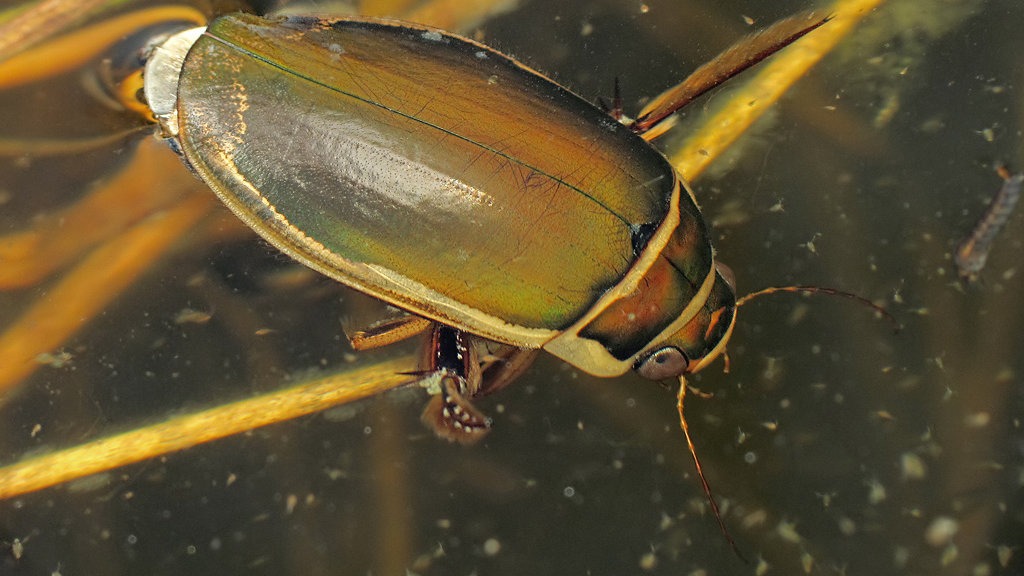This aquatic beetle has a deep yellow underside which continues onto the edges of its back. This yellow outline gives way to a dark coloured back with smooth, shiny green elytra in the males and grooved, dull elytra in the females. Like many other aquatic beetles, it has chunky back legs which are covered in hair, helping it to propel itself through the water.
Larvae: Long, thin bodies and a broad head with large jaws. Much larger than adults, sometimes growing as long as 60mm.
Latin name: Dytiscus marginalis
Size: 25-35mm long
Overview
These terrifying beasties are the predators of the pond and will gobble up anything from other insects, to small fish and even small frogs. They have very strong jaws and can chew through most pond inhabitants. Even its larvae are voracious predators, earning them the name water tigers. While the adults rip prey apart with mandibles, the larvae have needle like jaws which they use to inject digestive enzymes into other insects. To finish the gruesome meal, they suck up the resulting liquid.
They prefer ponds with plenty of vegetation from which they can make their attacks. At night they may fly to other water sources, looking for the reflection of the moon in other ponds. Unfortunately, other things reflect the moon’s light and they often become stranded on wet roads or other hard surfaces. Before diving, they trap bubbles of air under their wing cases. While submerged, they use specialized structures called spiracles to suck up the air so that they can stay underwater for long periods of time. Unfortunately, the air acts like arm bands, pushing the beetle upwards so it has to exert more energy to swim underwater.

- ‘Dytiscus marginalis‘ by Ryszard is licensed under (CC BY-NC 2.0)
In the garden
These voracious predators can be good for controlling numbers of other pond inhabitants like insects or fish. A couple of larger fish in your pond can keep their numbers from getting out of control by eating young larvae. With few predators though, these greedy carnivores can overrun your pond so it may be worth taking them out and setting them in the direction of another pond or slow moving stream if they cause you any problems.